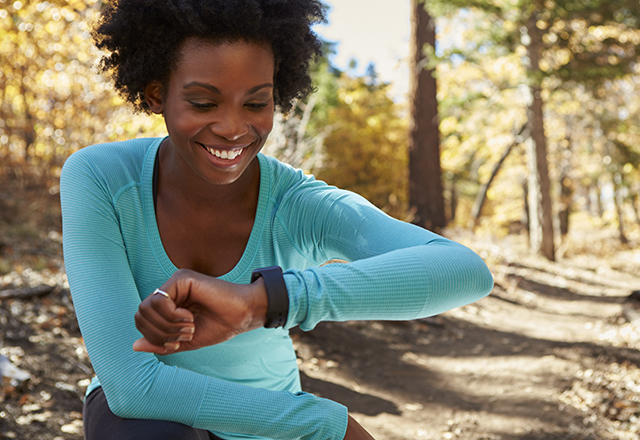Not sure if your daily steps add up to “enough” exercise? Follow the evidence. The U.S. Department of Health and Human Services comes out with Physical Activity Guidelines for Americans every 10 years. That means an independent, scientific panel putting together the hard evidence on exercise and our health.
The guidelines explain why and how people can feel better with regular movement—people of every age, physical ability and health status. And spoiler alert: You don’t have to hit the gym for an hour every day to reap the benefits.
Exercise creates same-day and long-term benefits for your body
Here’s what the research says: A single exercise session that gets your heartrate up can lower blood pressure, improve sleep, lower anxiety and improve insulin sensitivity on the day you do it. Other benefits, like lowering your risk of many chronic diseases and cancers, start adding up within days or weeks of regular physical activity.
Regular activity sets you up to stay independent as you age, and lowers your risk of fall-related injuries. For many people with chronic conditions, it can lower your risk of all-cause and disease-specific mortality.
Here are the current Physical Activity Guidelines for Americans:
- Sit less and move more. People who sit less and get even small amounts of moderate or vigorous physical activity gain some health benefits. So if the guidelines below don’t feel doable right now, start by sitting less. Some activity is better than none.
- For big health benefits, aim for these numbers: 2.5 to 5 hours of moderate aerobic activity, or 75-150 minutes of vigorous aerobic activity every week. Want to do more than that? You’ll get more health benefits. Try to spread this activity throughout the week.
- Strength train at least twice a week. Your bones, joints and muscles help you climb stairs, carry kids around and more. Give your major muscle groups some love and work them every week.
- If you can’t meet the guidelines, be flexible. Older adults, people with health conditions or disabilities should aim to meet the current physical activity guidelines. But if you can’t meet them all the time, that’s okay. Get regular activity as you’re able, and avoid being inactive.
- Add balance activities as you age. Tai chi, yoga and other forms of balance activities can help prevent falls. Especially when you also get other kinds of activity every week.
- If you’re pregnant, stay active. 2.5 hours of moderate physical activity spread throughout the week is a good goal for most people during and after pregnancy. If you were doing more intense exercise before pregnancy, you can continue after becoming pregnant. Consult with your care provider to find what’s best for you.
Tips to add the right amount of movement into your life
Know what’s moderate vs. vigorous. During moderate activity, you’re breathing hard, and can hold a conversation, but you can’t sing. Vigorous means you can’t get more than a couple of words out without a breath. Remember, you need twice as much moderate activity as vigorous to get the same benefits.
Find what motivates you. If the idea of lowering your risk of disease isn’t getting you out the door, you’re not alone. Most people stick with a good habit because of the everyday benefits. Notice what motivates you: Better sleep, lower stress levels, or working out with a friend are just a few ideas.
Multi-task. Incorporate movement into your regular activities. Bing watching a favorite show? Stretch, do sit-ups or other activity between episodes or during commercials. Mix up your family-time routine and shoot some hoops or walk the neighborhood. Instead of automatically jumping behind the wheel, hop on your bike or walk to work, the grocery store or a friend’s house.
Listen to your body, and go slow. The risk of injury comes when you’re trying to do too much, too fast. So know your body: how fit you are right now, and any past injuries. As you up your activity level, make it gradual.
Don’t discount the little things. All the activity you do counts, even if it’s 5 minutes. Take the stairs at the office. Park a few blocks away and walk. Lift weights while watching TV. It all adds up.


Leave a Reply